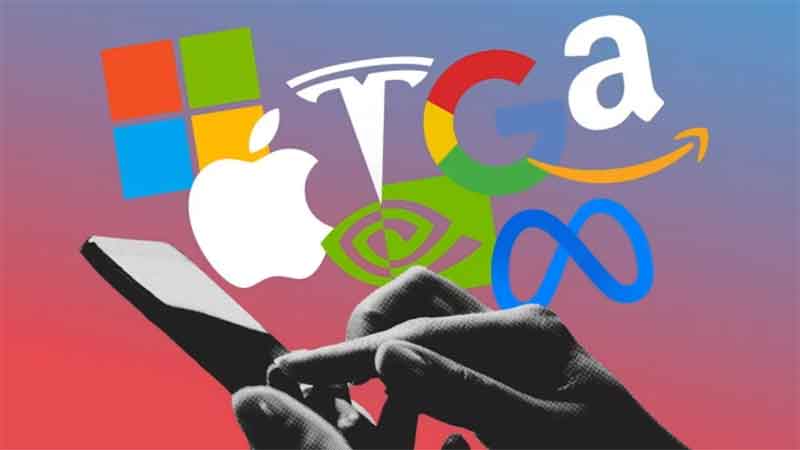
In an era marked by rapid technological advances and evolving consumption
patterns, the rise of digital media in India is nothing short of a revolution. As traditional television, often referred to as the “idiot box,” begins to lose ground, digital media platforms are not only capturing audience attention but are also reshaping the media landscape. A recent report by FICCI and EY indicates that India’s digital media industry is poised to grow at an impressive rate of 17%, reaching a valuation of $9.35 billion (INR 802 billion) by 2025. This marks a significant shift, with digital media now contributing 32% to the overall media and entertainment pie. But what does this rise mean for the television industry, and why is this transformation happening now?
The Decline of Traditional Television
When Ravish Kumar, one of India’s most respected journalists, told his audience four years ago to stop watching television, many dismissed it as an eccentric statement from a man frustrated with the state of Indian media. Yet, Ravish himself became a living example of how digital platforms could offer not just an alternative but a more profitable and credible avenue for media engagement. Transitioning from his role at NDTV to starting his own YouTube channel, Ravish Kumar’s growth both in terms of income and influence is a testament to the power of digital media.
So, what went wrong with television? While TV was once the dominant force in shaping public discourse, it has struggled to adapt to changing viewer preferences. The “idiot box” moniker, once seen as a casual jibe, now reflects the sentiment of millions who have grown disillusioned with the sensationalized, agenda-driven content that has become commonplace on TV. The corporate-backed TV channels, with their hyper-partisan anchors and screaming debates, failed to stay connected to the needs and desires of their audience. As TV news evolved from fact-based reporting to emotionally charged discussions designed to boost ratings, it began losing its credibility and relevance.
In contrast, digital media has flourished precisely because it offers a more personalized and interactive experience. Digital platforms allow content creators to cater to niche audiences and produce more meaningful, diverse, and in-depth content. Whether it is investigative journalism on YouTube or specialized news websites, digital platforms are tapping into the pulse of the nation, addressing issues that resonate with everyday citizens—issues that have often been sidelined by the mainstream media.
Digital Media’s Unprecedented Growth: The Numbers Speak
The numbers behind the rise of digital media in India are staggering. According to the latest FICCI-EY Annual Report on the Media & Entertainment sector, the Indian digital media industry is experiencing 17% year-on-year growth, and it is set to reach a valuation of $9.35 billion (INR 802 billion) by 2025. This surge in growth highlights a paradigm shift in the way people are consuming content. Digital media’s contribution to India’s overall media and entertainment sector now stands at a significant 32%, a figure that underscores its increasing dominance over traditional forms of media like television.
The expansion of internet penetration in India, coupled with the proliferation of affordable smartphones, has been a key driver of this growth. As of 2023, India had over 800 million internet users, with a large percentage of them accessing content via mobile devices. This has paved the way for new media formats, including video streaming, podcasts, and user-generated content, to flourish. Platforms like YouTube, Instagram, and WhatsApp are not just sources of entertainment; they have become essential tools for news dissemination, social engagement, and activism.
As traditional TV networks continue to rely on high-cost broadcasting infrastructure, digital platforms have emerged as cost-effective and agile alternatives. The flexibility of digital media allows it to cater to a variety of audiences, making it more inclusive and diverse. Whether it’s long-form documentaries on YouTube or quick updates on social media, digital platforms can adapt to the consumption habits of younger, tech-savvy audiences.
The Appeal of Digital Media: Connecting to the Pulse of the Nation
What sets digital media apart is its ability to connect directly with audiences in a way that traditional TV cannot. This connection is rooted in authenticity, relevance, and flexibility. Digital media platforms have a unique ability to respond to the concerns of the nation in real time, without the corporate or political pressures that often shape the content on TV.
Take, for instance, the digital media’s response to issues of social justice, environmental degradation, and political accountability. Over the past decade, countless YouTube channels, blogs, and independent media organizations have consistently highlighted important issues such as the rights of Dalits and tribals, government corruption, labor rights, environmental pollution, and the exploitation of natural resources like water, forests, and land. These digital platforms often operate with far fewer resources than traditional media outlets, yet their ability to break stories and hold powerful institutions to account has made them indispensable in the modern media landscape.
Digital media also stands out for its inclusivity and grassroots approach. While TV channels are often driven by commercial interests and tend to concentrate on a narrow set of issues, digital platforms have successfully showcased the struggles and triumphs of marginalized communities—tribals, Dalits, farmers, and women. Digital media has allowed for a more pluralistic representation of voices, allowing different segments of society to tell their own stories on their terms.
The Role of Digital Media in Advocacy and Change
As digital media continues to grow, its role in shaping social and political discourse becomes more pronounced. The next phase of digital media’s evolution should focus on harnessing its power to bring about tangible change. Now that digital platforms have successfully created space for diverse voices and agendas, it is time for these platforms to go beyond mere reporting and become active participants in advocacy.
One of the most critical areas where digital media can have a significant impact is in mobilizing public opinion and pushing for policy change. India is grappling with a host of issues—from water conservation and preserving agricultural land to ensuring women’s safety and creating youth employment opportunities. While TV debates often get bogged down in sensationalism, digital media can play a more strategic role in organizing campaigns, building coalitions, and pressuring policymakers to act.
Moreover, digital media can be a force for dismantling the divisive narratives that have plagued Indian society, especially on issues related to religious and caste-based divides. Mainstream TV has often contributed to deepening these divides, with anchors pushing agendas that stoke fear and hatred. Digital media, on the other hand, has the potential to present counter-narratives that promote unity, tolerance, and inclusivity. It can advocate for policies that benefit all sections of society, irrespective of caste, religion, or economic status.
Conclusion: Digital Media’s Responsibilities Moving Forward
The growing dominance of digital media in India is not just a trend; it is a fundamental shift in the way the country consumes information and engages with societal issues. As TV gradually cedes its position to more nimble, engaging, and diverse digital platforms, it is essential for digital media to rise to the occasion.
The next step for digital media is to refine its approach and focus on building an even stronger connection with its audience. While the shift away from TV is cause for optimism, digital media must ensure it addresses pressing issues with accuracy, empathy, and evidence-based advocacy. FICCI-EY’s report highlights the opportunity for digital platforms to become the drivers of social change in India. By focusing on the issues that matter most—such as job creation, women’s safety, education, and environmental sustainability—digital media can contribute to a more informed, engaged, and empowered citizenry.
Subscribe to Our Newsletter
Get the latest CounterCurrents updates delivered straight to your inbox.
Ultimately, digital media’s success will not just be measured in terms of revenue and viewership, but by its ability to shape a more equitable and just society. As the digital media industry continues to grow, it will play an increasingly important role in holding institutions accountable and providing solutions for the nation’s most pressing challenges. Now is the time for digital media to step up, not just as an alternative, but as the future of media in India.
Aman Namra, a seasoned Development Journalist with a remarkable three-decade career, has made significant contributions in the field. As the Incharge and Resident Editor of the prominent National Development Communication Network “Charkha,” headquartered in Delhi, Aman has played a pivotal role in advancing the organization’s mission. Notably, “Charkha” was established by the renowned social worker Sanjoy Ghose, whose life was tragically cut short by Ulfa Extremists.
Aman’s commitment to fostering knowledge and awareness extends beyond the editorial desk. He has conducted approximately 50 media workshops across multiple states, including Madhya Pradesh, Chhattisgarh, Bihar, Jharkhand, Rajasthan, Uttarakhand, Mizoram, and Uttar Pradesh. These workshops have engaged journalists, social activists, and thought leaders, reinforcing the importance of Development Journalism.
Recognized as an authority in the field, Aman has been invited to share his insights on Development Journalism at prestigious institutions such as the Indian Institute of Mass Communication, Lady Irwin College in Delhi, and Makhan Lal National University in Bhopal. His expertise and experiences are highly regarded in academic circles.
Aman’s influence extends to the realm of the written word. He has penned over 100 articles covering a diverse range of topics, which have been published in various newspapers and magazines. His literary accomplishments include the authorship of two books on traditional water harvesting, both published by esteemed institutions, the National Book Trust and the National Foundation of India in Delhi.
Aman’s commitment to knowledge exchange and cross-border understanding is exemplified by his selection as a South Asia Media Exchange Fellow. During his fellowship, he conducted research in Nepal, focusing on traditional water harvesting and natural foresting systems, thereby contributing to regional knowledge and sustainable practices.
Today, Aman continues to shape the media landscape as the Executive Editor of Digital Media at Dainik Bhaskar, headquartered in Bhopal. His extensive experience and unwavering dedication to Development Journalism continue to leave a lasting impact on the industry.















































